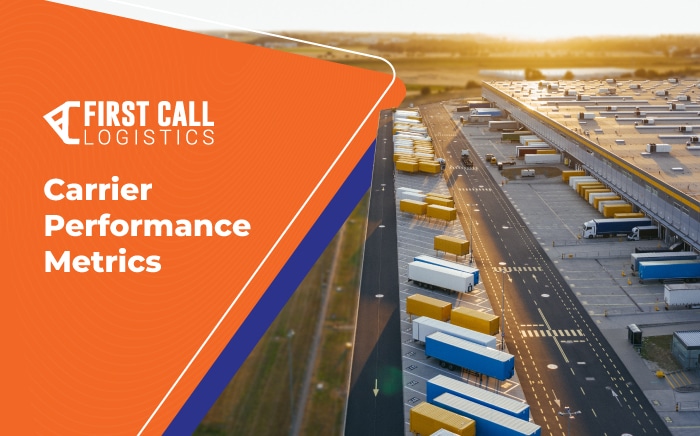Carrier Performance Metrics

What Metrics You Should Track to Improve Carrier Performance
Implementing a carrier performance metric program is an effective way to measure your transportation operations performance (as well as the performance of your carriers) is by tracking the right metrics or KPIs (key performance indicators). Transport costs have a direct impact on your business’ bottom line, so monitoring performance is essential from managing cost and driving long-term financial and operational stability. Thanks to simple data captured over time, shippers can bring data-driven decisions to ensure the best possible mix of performance, coverage, and cost. Let’s take a look at the most critical metrics to track.
Communication
Compare the actual appointment time to the time a carrier notifies you of a delay to determine how well a carrier communicates proactively. Failing to communicate proactively often leads to more significant issues than late pickup/delivery. Uncommunicated late delivery can prevent the dock from making a backup plan to avoid downtime waste.
On-Time Pickup and Delivery
On-time freight pickups and deliveries are essential to your success. It’s simple – if you’re paying for on-time delivery, then it’s what you should expect. Otherwise, late pickups and deliveries could alienate your customers. Keep track of how often your freight arrives on time (including both the percentage or numeric value).
Damage-Free Deliveries
Your customers hold you responsible for the damages. Therefore, you need to know which carriers cause damage to avoid the costs of replacements and returns, which can also help the carrier understand why there’s a higher damage risk with products shipped from your location.
Fallout
When a carrier accepts a transport tender and then hands the load back, this is called fallout. Measure the fallout percentage to determine to most frequent offenders and avoid them, because fallouts can increase transportation costs.
TMS (Transport Management System) Updates
Measure the frequency of times a carrier updates their TMS system for arrival/departure times. The more they communicate, the better because it will provide you enough data to complete your carrier scorecard. The rule of thumb is that a carrier with a higher update frequency has a better handle on their truck status.
Customer Service Responsiveness
At times, shippers need to call their carrier’s customer service to measure the capability and performance of their customer service, including the willingness of the person you speak with, the duration required to complete a request, and average response time.
Billing Accuracy
Due to the increasing number of freight processes today, it happens that carriers make mistakes, so shippers can’t expect complete accuracy in billing. However, excess inaccuracies and problems in billing can be quite costly, so you should make an effort to determine which carries exhibit the most mistakes.
Measuring each of these scores can provide a comprehensive view of your carriers’ service quality. Take all the scores and create an overall ranking score for each carrier, and use them to work with your carriers to improve their performance. Instead of firing them, you will be able to build a better, trustful, and long-lasting relationship.
First Call Logistics strives for excellence in service backed by industry experts. We can help you take control over your shipments and ensure that freight will be picked up and delivered safely and on time.
Simplify your Next Shipment with First Call Logistics
Building and managing cost-efficient supply chains is a full-time job. First Call’s rare combination of in-house assets, expert problem-solving and track record of stellar customer service makes us the 3PL of choice for business partners with a wide range of shipping needs.